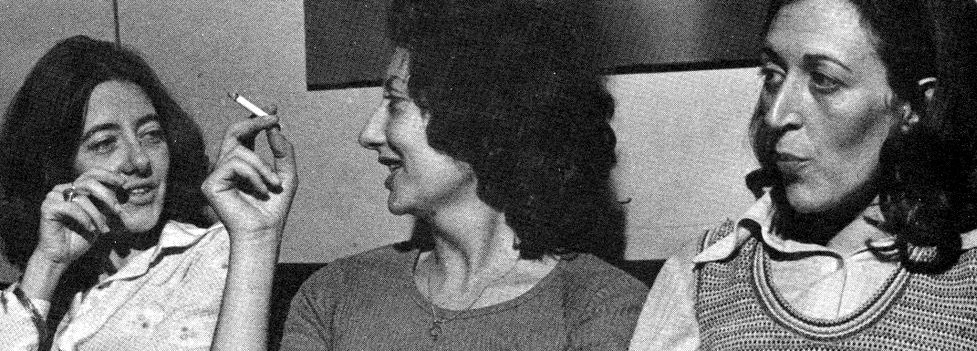In Manuela Porto's 1945 short-story “Maria”, the main character values maternity as the only way in which she can fulfill herself in the context of the New State regime. What this praise of motherhood reveals is not, however, a passive conformity to prescribed social roles but a desire to hold a mirror to the established order which privileges a model of passive motherhood. Porto excels in her depiction of a rather ambivalent relationship with motherhood which leads her to commit suicide once she realizes she cannot become a mother. Porto's short-story “Maria” denounces the suicidal despair experienced by Portuguese women who find themselves locked in their roles as wives and mothers of the nation.
The history of Portuguese anti-fascist struggle throughout the 1960s and 1970s would throw back the echoes of Porto's 1945 frustrated Maria. The waves of unrest fueled by student uprises felt throughout the USA and western Europe in the late 1960s, and the ensuing fight for equality between the sexes, were not immediately felt in Portugal. In this isolated corner of Europe, efforts were initially directed at fighting back fascism and colonialism, not gender or class inequality. This is attested by the growing politicization of universities in Portugal throughout the 1960s, which led to the radicalization of opposition to the regime, but not to an open debate around questions raised by women's position within the socialist opposition, as was happening beyond the Portuguese borders. As noted by Graça Abranches, “We find no women's collectives within the students' movement – as was to be expected, when no such thing as a women's movement existed in Portugal at the time” (Abranches 1998: 5). The censors of the regime regularly examined books and articles published internationally, and suppressed parts that were considered obscene before allowing their publication in Portugal. These suppressions included references to discussions on abortion abroad, and the work of influential women such Simone de Beauvoir, Betty Friedan and Kate Millet. The New State ideology forbid the distribution of the contraceptive pill in the Portuguese territory, emphasizing instead the reproductive function of female sexuality.
Despite this repressive environment, Portuguese women played a central role in clandestine activities organized by the Portuguese Communist party (PCP) before 1974, and were, as a result, regularly imprisoned and tortured by the infamous Portuguese secret police (PIDE). As noted by Tavares, the clandestine activities of the PCP were often conducted from so-called “casas do partido” [party's houses], regular homes turned into political hubs of subversion. Although women's role in these houses was pivotal for the success of the Communist opposition to the regime, their efforts were hardly ever acknowledged by men, and they faced constant discrimination in the name of an “utopia política que poderia um dia mais tarde resolver todos os problemas” [political utopia that might one day solve all problems] (Teresa Almeida quoted in Tavares 2009: 153). Because their true identity had to be hidden, these women were often referred to simply as “Maria”:
“Eram tratadas simplesmente por 'Maria' por muitos dos seus camaradas e as suas funções mais valorizadas eram as tarefas caseiras” [They were treated simply as “Maria” by many of their comrades and the tasks performed by women that were most valued were domestic] (Tavares 2009: 152).
The image of these silent 'Marias', looking over the shoulders of their comrades as they cooked their meal and fed their children is very significant, since it exemplifies the marxist female ideal underpinning the “original position” of the Communist community, which demanded women to be as tough as men, while accepting all the traditional burdens of womanhood. This exemplifies how Portuguese women's self-perception as feminists was, once more, reinforced by a masculinist liberation movement's inability to accommodate women's issues, this time in the context of the fight against the right-wing dictatorship and the Colonial War in Africa.
In this context, the writing process of Novas Cartas, which started in May 1971, may be best described as a collective cry of three Marias not only against fascist national isolation and repression, but also against a general silence on gender issues imposed by the marxist male opposition to the regime. As co-writers, they refuse the ideal of femininity offered by their comrades. The (very different) feminisms of the three writers were affected by the Portuguese marxist community as an oppositional protest movement that fought for the liberation from oppression without accommodating a feminist agenda. The fact that the women would later be internationally known as the “three Marias” is an ironic detail that, far than simply confirming the feminist co-opting of the book as a simplified political symbol of sisterhood, instead emphasizes the book's deliberate violation of the tacit conventions of the anti-fascist contract of “fraternidade”, responsible for the use of the “Maria” epithet in the first place.


No comments:
Post a Comment